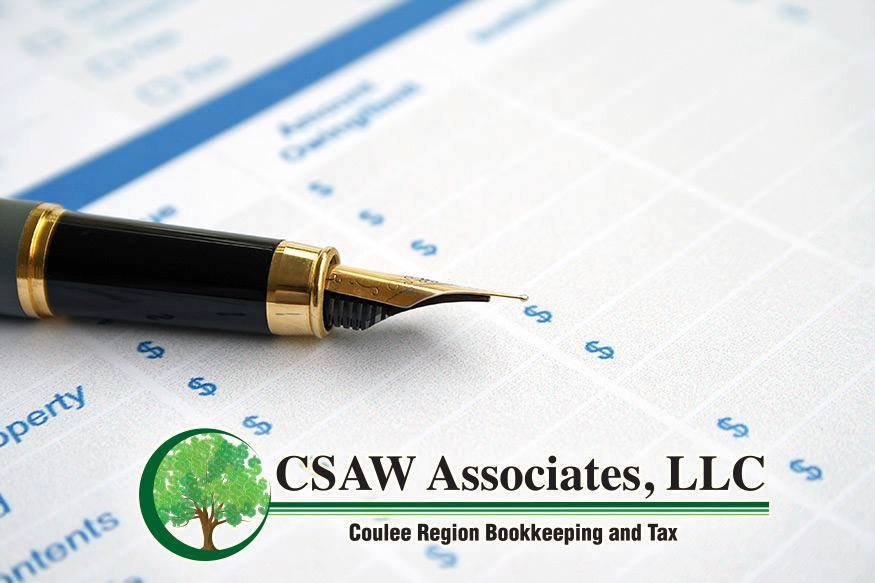The Top 5 Things You Can Do Year-Round to Make Tax Time Easier
Tax season can often feel like a whirlwind of paperwork, deadlines, and stress. However, with a bit of year-round preparation, you can turn this hectic period into a manageable task. At CSAW Associates, we believe that staying organized and proactive throughout the year can save you time, money, and headaches when it comes to filing your taxes. Here are the top five things you can do year-round to make tax time easier:
1. Keep Accurate and Up-to-Date Records
Maintaining accurate financial records is crucial for a smooth tax season. Here’s how you can stay on top of your record-keeping:
- Regularly update your books: Make it a habit to update your bookkeeping weekly or bi-weekly. This includes tracking income, expenses, invoices, and receipts.
- Use accounting software: Leveraging tools like QuickBooks or Xero can streamline your record-keeping process. These platforms offer features such as automated transaction imports, expense categorization, and real-time financial reporting.
- Store digital copies: Keep digital copies of all important documents. Use cloud storage solutions like Google Drive or Dropbox to ensure your files are safe and easily accessible.
2. Track Your Deductible Expenses
Identifying and recording deductible expenses throughout the year can significantly reduce your taxable income. Common deductible expenses include:
- Office supplies and equipment: Keep receipts for items like computers, printers, and office furniture.
- Travel and transportation: Log mileage, airfare, and lodging costs related to business trips.
- Home office: If you work from home, you may be eligible for a home office deduction. Track expenses for utilities, internet, and office supplies.
- Professional services: Fees paid for legal, accounting, and consulting services are deductible. Save invoices and contracts from these service providers.
3. Plan for Major Financial Events
Major financial events such as purchasing property, acquiring new assets, or expanding your business can have significant tax implications. Here’s how to plan ahead:
- Consult with your accountant: Before making any major financial decisions, discuss potential tax implications with your accountant. They can help you understand the best timing and strategy to minimize your tax liability.
- Document major purchases: Keep detailed records of any major purchases or investments. This includes purchase agreements, financing documents, and depreciation schedules.
4. Review Your Payroll Practices
If you have employees, ensuring accurate and compliant payroll practices is essential. Here’s what you can do:
- Regular payroll audits: Conduct periodic audits of your payroll records to ensure accuracy and compliance with tax regulations.
- Stay updated on tax laws: Tax laws and regulations related to payroll can change. Stay informed about any updates that might affect your payroll processes.
- Employee classification: Ensure that employees are correctly classified as either employees or independent contractors. Misclassification can lead to significant tax penalties.
5. Schedule Regular Financial Reviews
Regularly reviewing your financial status can help you stay on top of your tax obligations and make informed decisions. Here’s how:
- Quarterly reviews: Schedule quarterly reviews with your accountant to discuss your financial performance, tax obligations, and any potential tax-saving strategies.
- Adjust estimated tax payments: If your business experiences significant changes in income, adjust your estimated tax payments accordingly to avoid underpayment penalties.
- End-of-year planning: Conduct a comprehensive review towards the end of the year to identify any last-minute tax-saving opportunities and ensure all financial records are in order.
Conclusion
By implementing these strategies year-round, you can make tax time a less stressful and more efficient process. At CSAW Associates, we’re here to help you navigate the complexities of tax preparation and ensure that you’re well-prepared when tax season arrives. If you have any questions or need assistance with your bookkeeping and accounting needs, don’t hesitate to reach out to our experienced team.
Contact Information
Phone: (608) 667-0142
Email: couleebookkeeping@gmail.com



